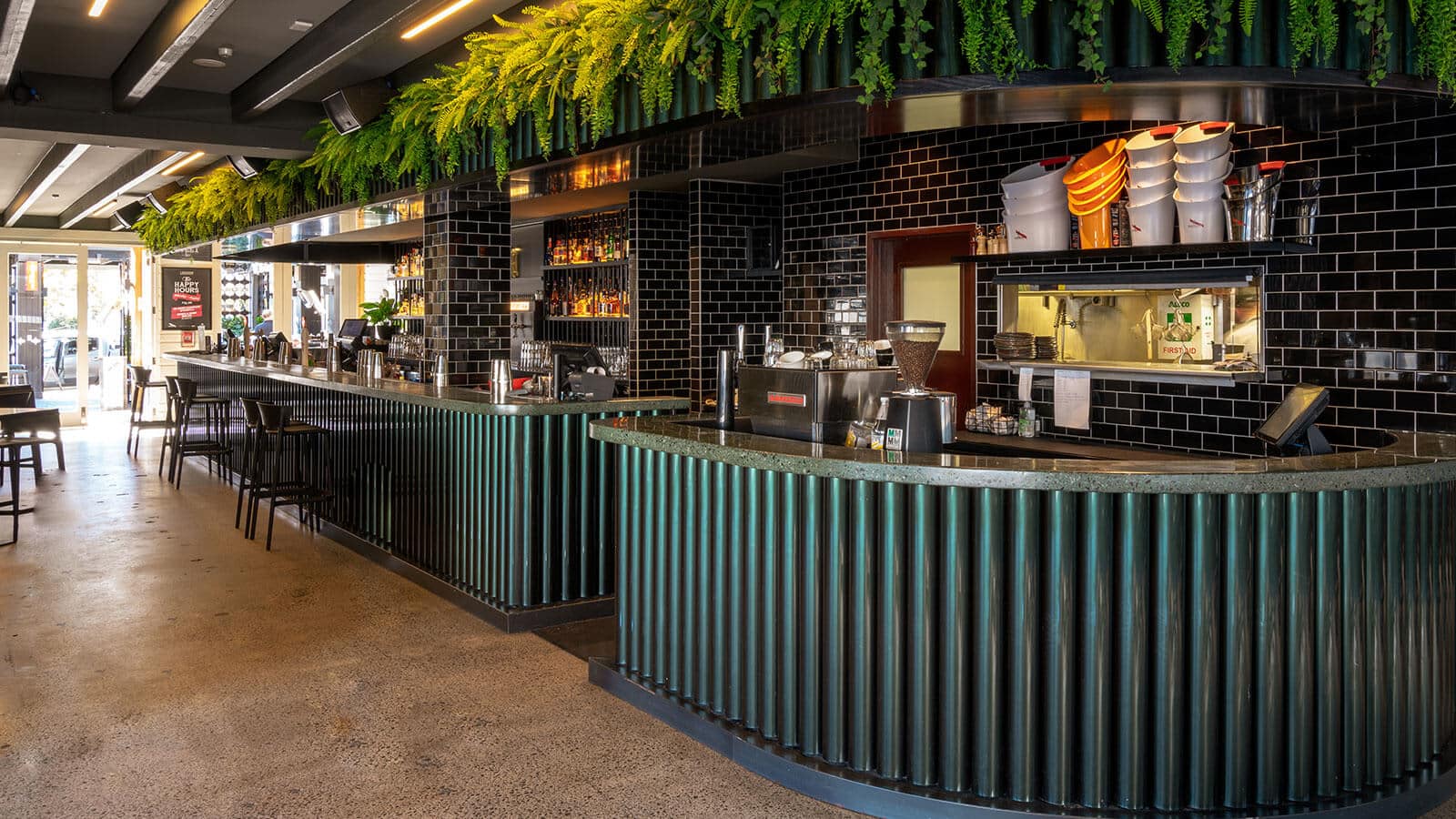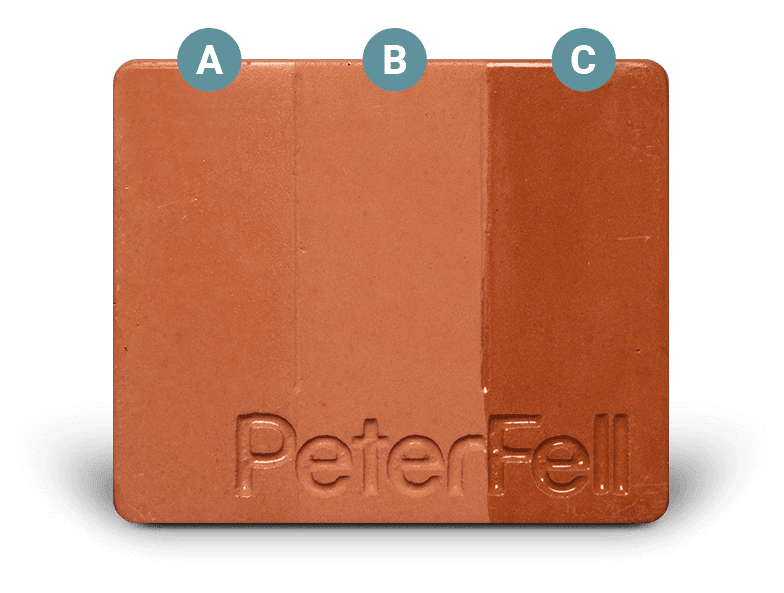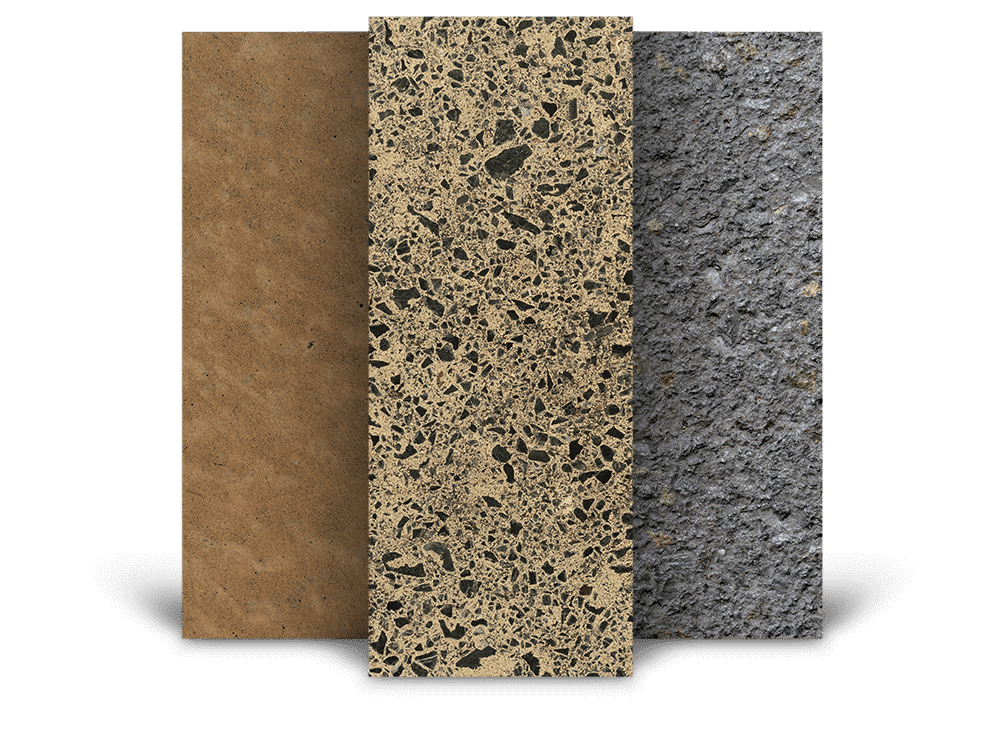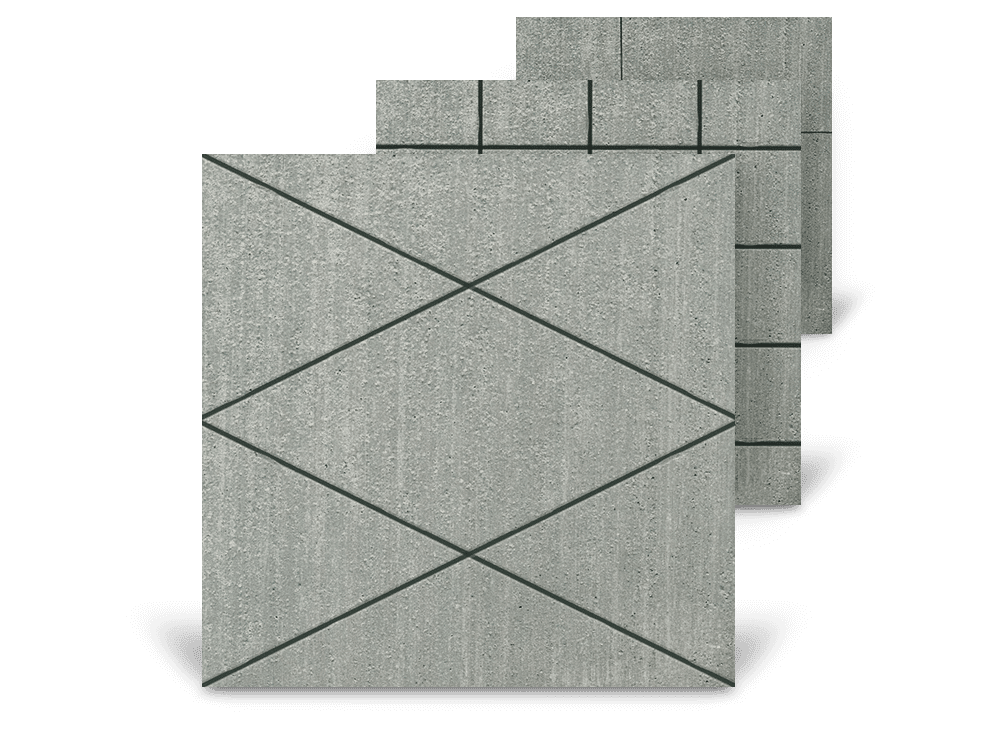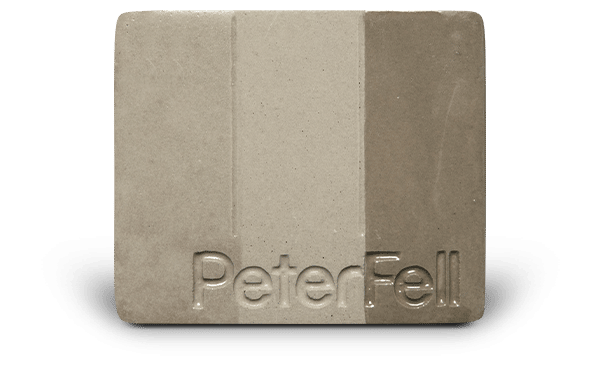Commercial.
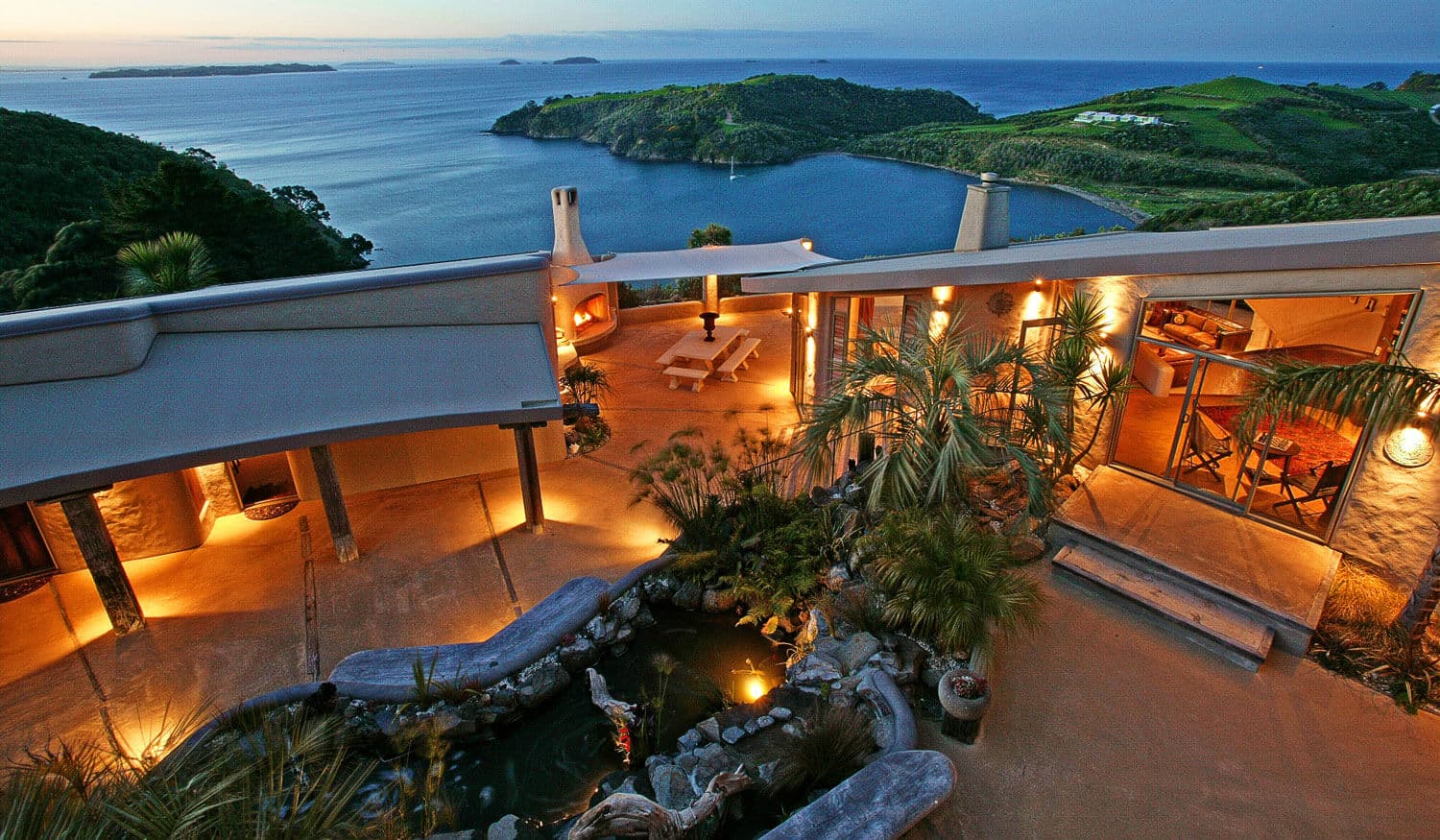
PeterFell Coloured Concrete brings the natural beauty of concrete to commercial spaces large and small.
From the hardwearing practicality of a large warehouse to being a unique design feature for restaurants and shops, you’ll find the right solution for your commercial space with PeterFell Coloured Concrete.
The range of colours gives you the flexibility to use your concrete to complement or contrast your décor. This design freedom is enhanced even more with a range of textures, patterns and seals.
The colour will last for generations and because it’s concrete, it will easily withstand the knocks of even the most demanding commercial environments.
PeterFell Coloured Concrete has been used in a range of commercial spaces, including warehouses, supermarkets, offices, restaurants and shops.
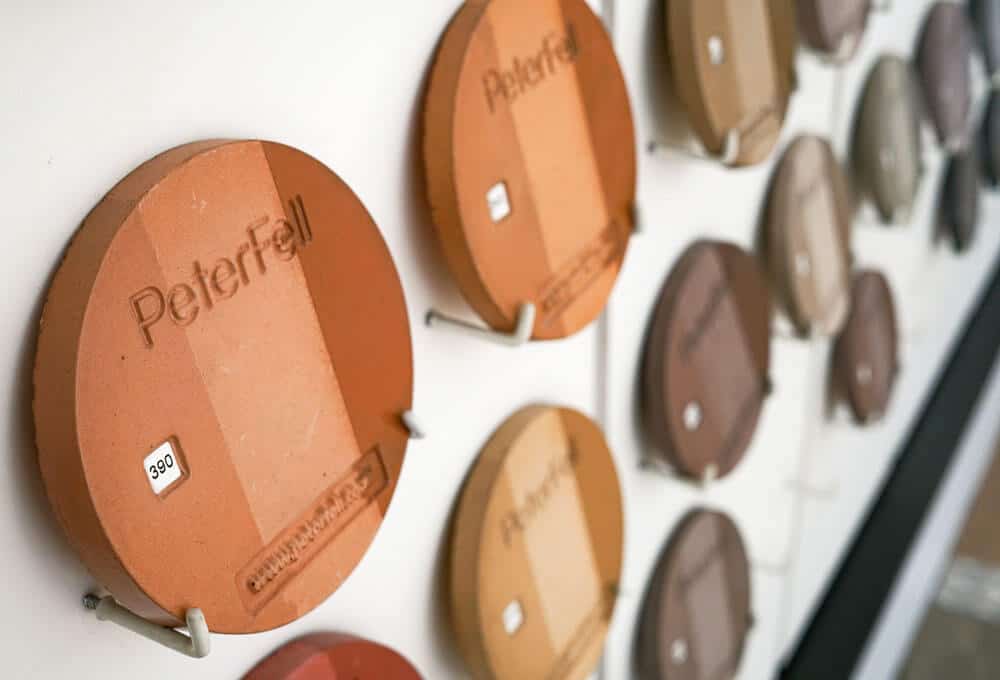
Follow these five steps to create your perfect space.
The PeterFell System is the proven way to colour and protect your concrete.
There are five basic steps that take you through design, colour, texture, patterns, and protection. So you can create the space you want and know it’s going to last.
Step one. Design.
The shape of commercial spaces is usually determined by the walls, but floors are just as important in creating the final effect.
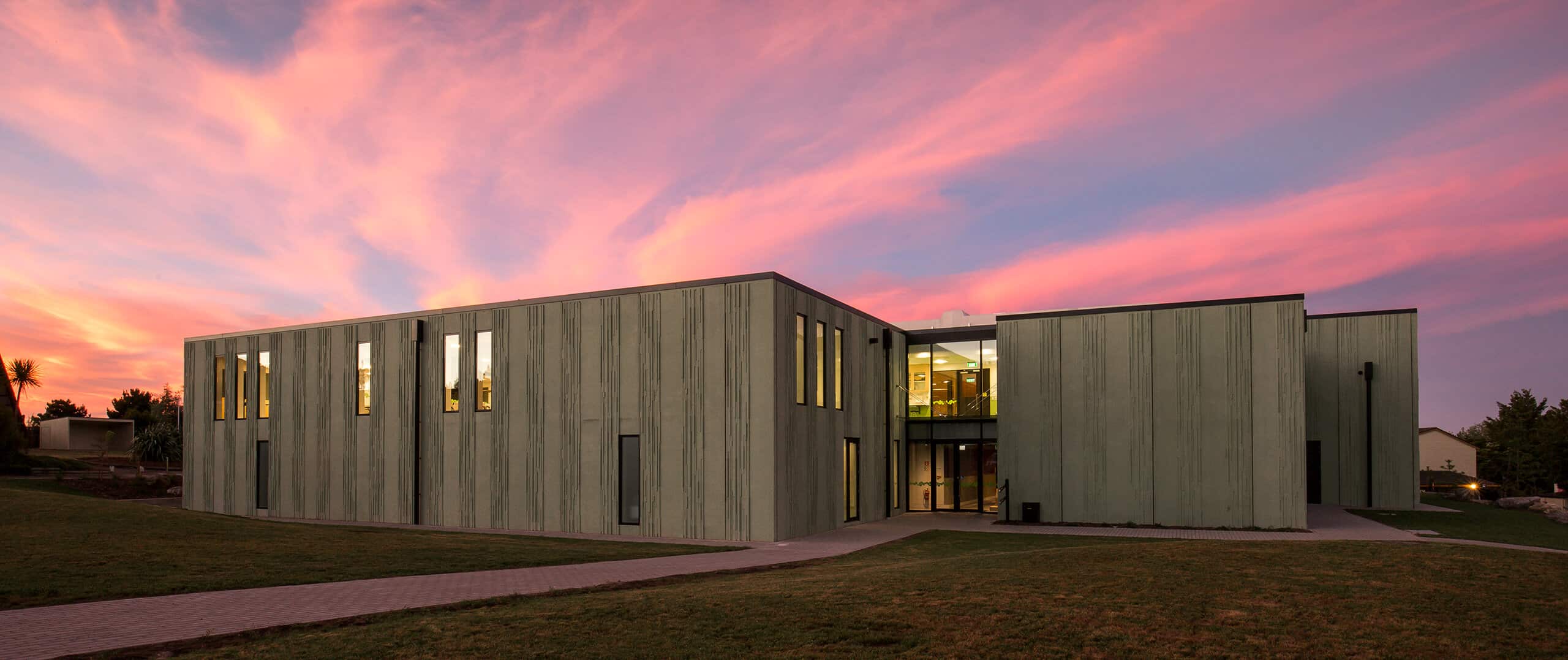
Floors don’t always have to be all the same colour – two different colours can easily be poured.
For spaces with lots of foot traffic, the other big consideration you need to make is around joints. If it’s not done right, ongoing maintenance can become an expensive issue. Using a post tensioned slab eliminates this risk. It may be a bit more expensive initially but eliminates a lot of the long term maintenance.
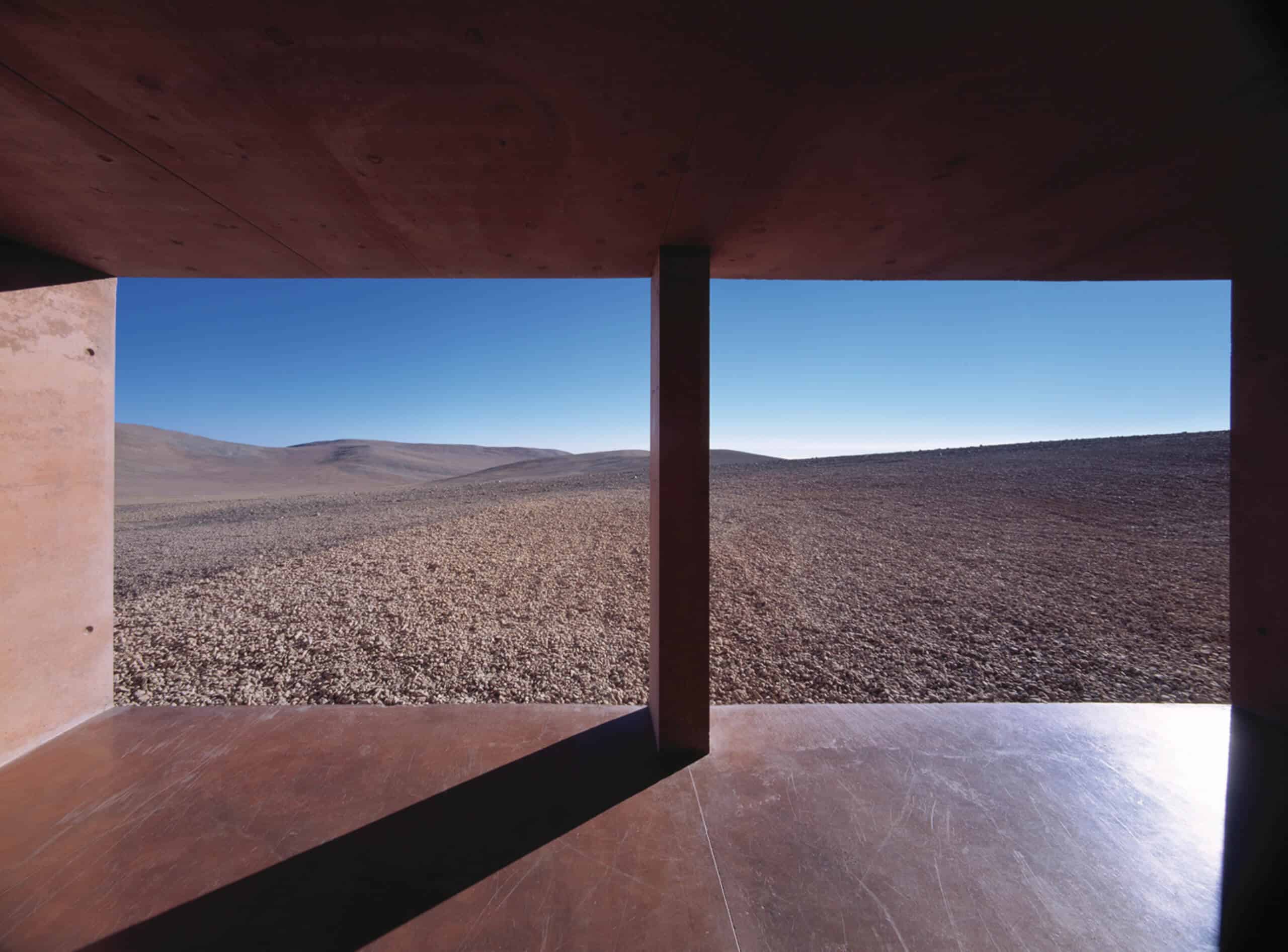
Suspended slabs.
Coloured concrete has been used in many suspended slab projects.
The only issue to plan for is that of cracking over the beams or above precast joints. Many flooring solutions employ thin concrete toppings and if long spans exist then they may be relatively dynamic. This in itself is not a problem as sawcuts can be employed to minimise the risk. Construction Cuts should be made before the props are removed. This will force the cracks to occur in a controlled way. We recommend that you discuss this with the project engineers.
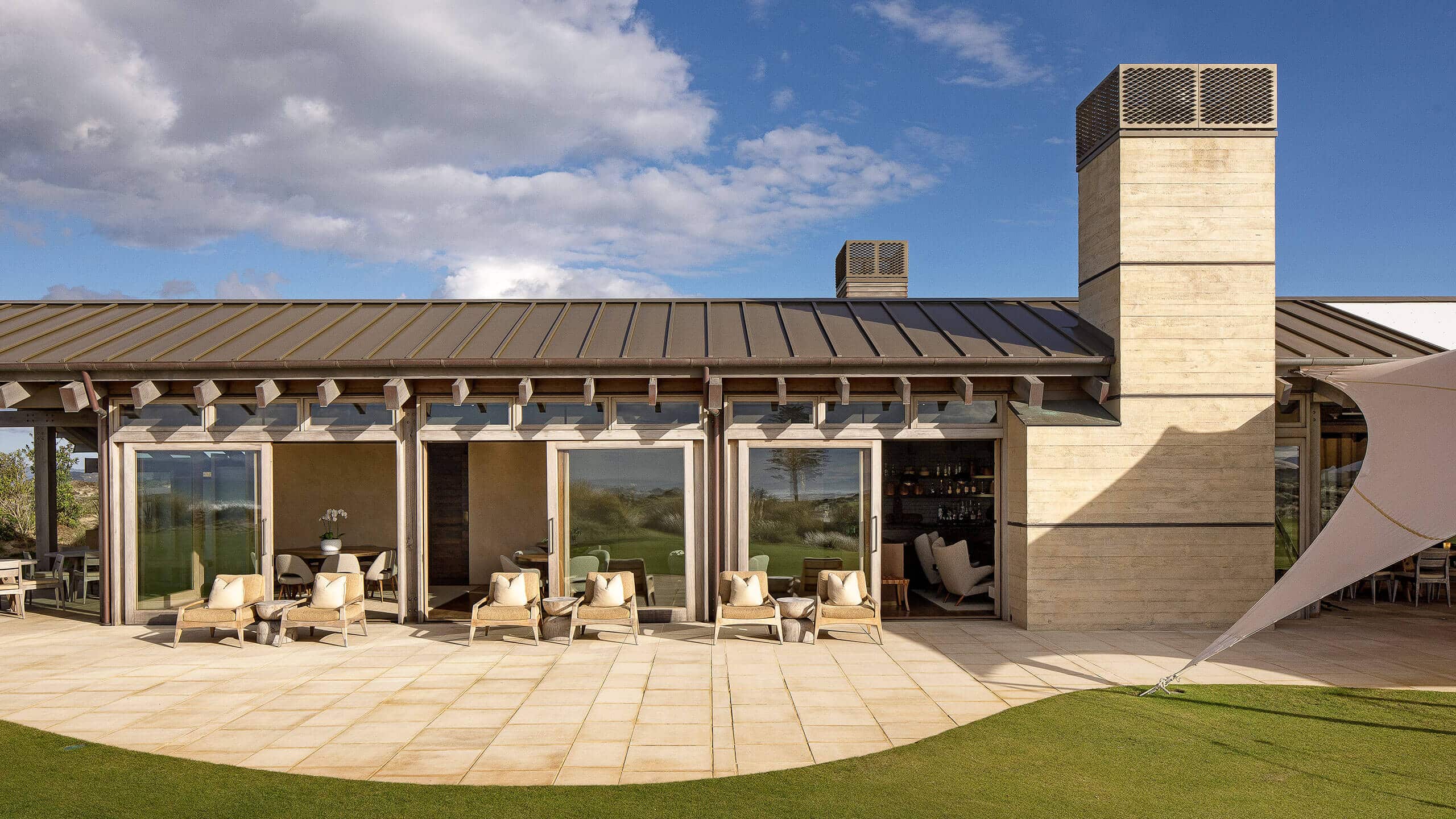
Step two. Colour.
You don’t need to follow any rules or trends when it comes to choosing colour for your commercial space. It’s all about personal choice.
With over 80 colours available, there is plenty of colour choice for your patio or courtyard. The iron oxides used to colour the concrete are completely UV stable and are mixed all the way through the concrete – the colour is permanent. As concrete is a natural product, adding the colour takes on a natural patina, or mottliness, which characteristic of a true coloured concrete floor, and makes each patio unique.
It’s important that you see real concrete samples before you make your final selection. Don’t pick your colours from the screen, as colours will look different on every screen you view it on. Visit our showroom or order a concrete sample.
Handy hints:
- For areas with good sun, too light a colour can result in excessive glare
- In shady areas, a light colour can really help to lift the whole space.
- The big colour blocks in a home are roof, wall and patio – think about these first.
- You don’t need to be bold! The Neutral and Charcoal range offer a number of simple colour options that will never go out of fashion.
Step three. Texture.
When choosing a decorative concrete floor, one of the main decisions is what textured finish to use.
The standard concrete finish for commercial or high use areas is a hard machined finish. This results in a highly durable surface, and gives a floor with a simple clean look and feel. This finish is the most economical, and the natural patina of the colour comes to the fore.
If a more detailed finish is desired, the concrete can be ground, removing the top surface to expose the stones (aggregate) in the concrete. In grinding the floor several other factors need to be considered, such as the type of aggregate (shape, size, colour) and how much of the aggregate you want to see. Whilst more expensive, grinding opens up a lot more decorative options, enables any minor imperfections to be remedied, and gives more control over the gloss level of the finished floor.
Polishing of the floor will also improve the performance of the floor, and can enable higher end gloss levels to be achieved, perfect for showroom or retail outlets.
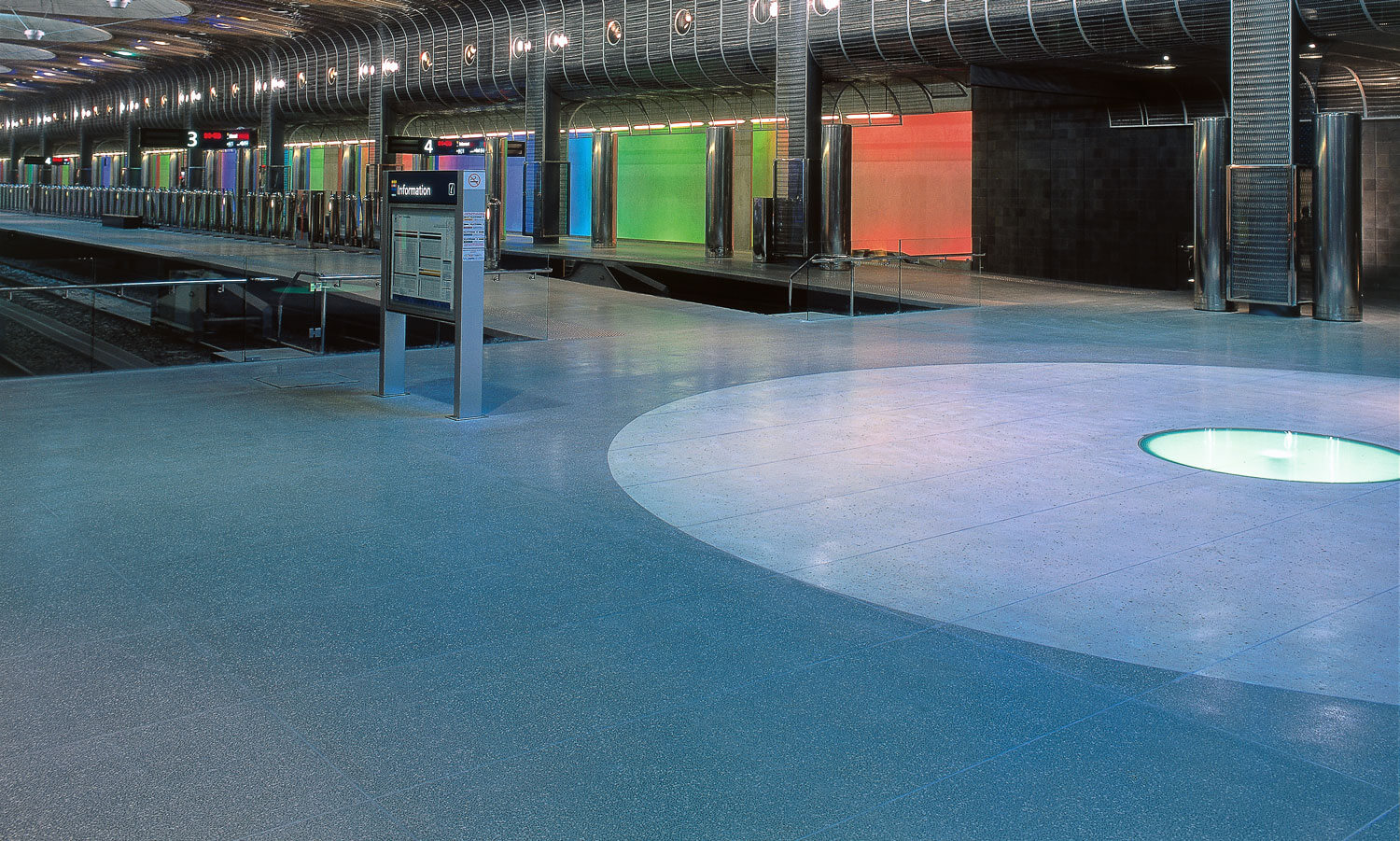
Step four. Patterns.
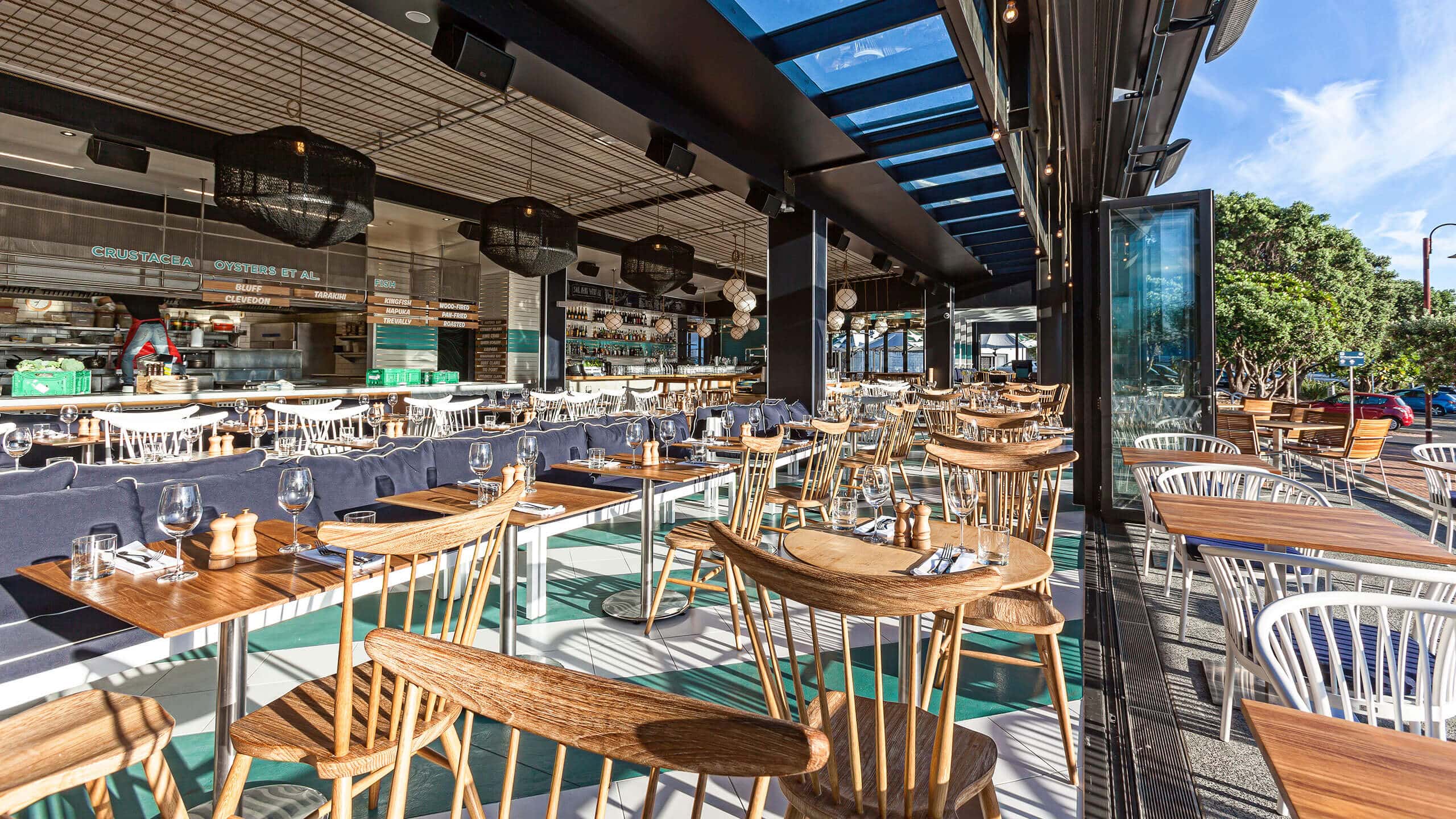
Cutting concrete is essential to control cracking but can also be used to add detail to the floor.
All newly poured concrete shrinks as it dries which can result in cracks. To control this potential cracking the concrete is cut (Construction Cuts) shortly after being laid. These cuts are strategically placed and serve an important function in the performance of the floor.
These Construction Cuts can be complemented with additional cuts to form a pattern on the surface. These secondary cuts (Decorative Cuts) can be placed wherever desired to create a tile or large flagstone look. Conversely, if clean space is desired no additional cuts are required.
The cuts are filled with a coloured grout.
To finish the pattern, the cuts are filled with our special concrete grout. This gout can be coloured using any PeterFell colour. Commonly people choose to have the grout the same colour as the concrete. As the grout is slightly darker than concrete, the colour will have a slight tonal difference, giving a subtle contrast to the pattern. The surface of the grout may be flush with the surface or slightly concave. It’s all about the look you want to create.
Step five. Protection.
Sealing or polishing the concrete protects from staining and marking, making it easy to clean and maintain.
The last step in the PeterFell System is to protect the floor and provide a suitable gloss finish. This can be achieved by application of a sealer or by polishing the concrete surface. A sealer can be applied to the surface to form a protective coating and a lustre to the surface. A range of sealers are available, and they can be applied by a DIYer. Alternatively, the floor can be polished. Polishing involves mechanically refining the surface in combination with products that harden and protect the surface. Polishing the surface enable a range of gloss levels to be achieved.
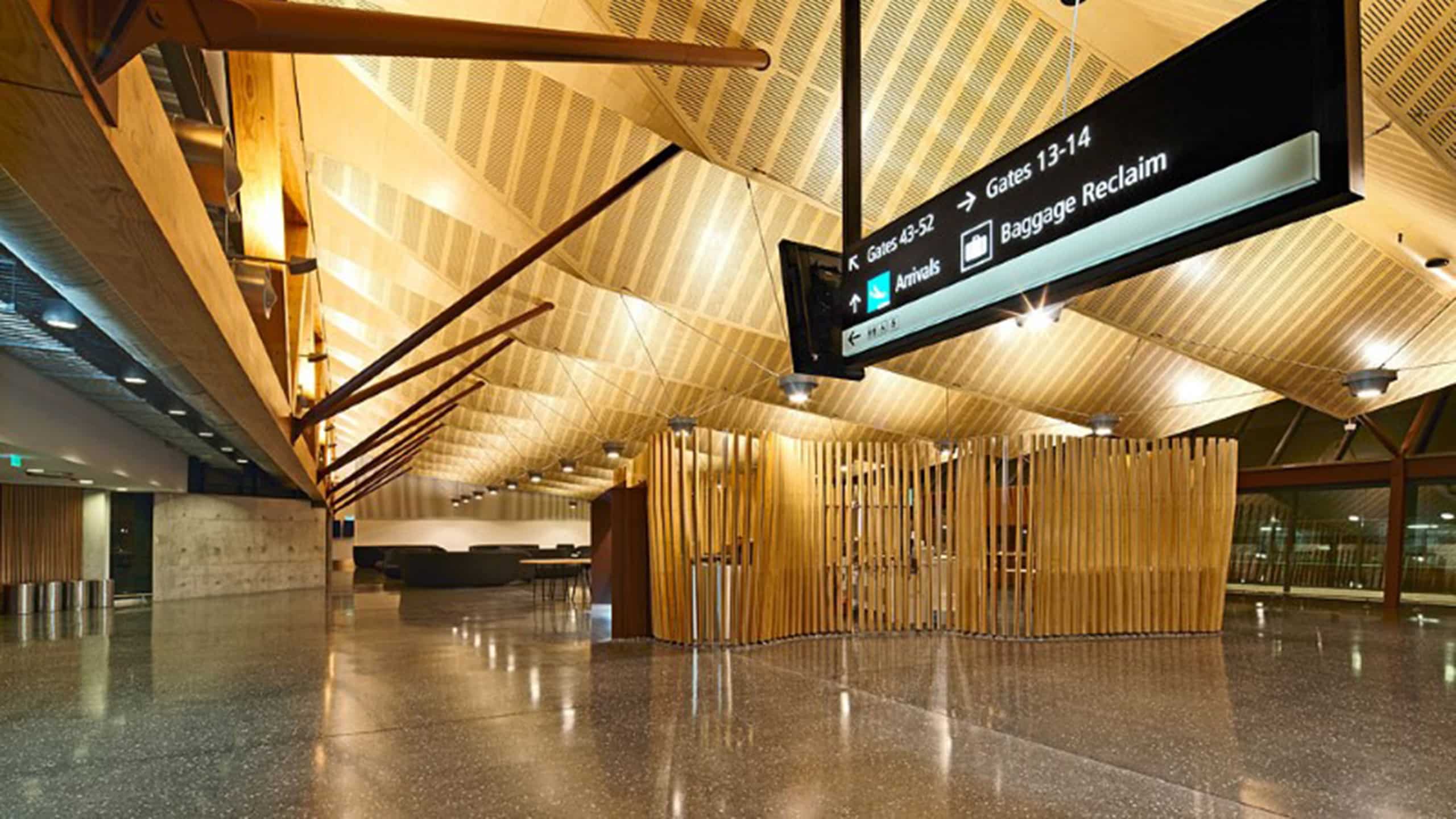
Frequently asked questions.
Design.
Why should I use Peter Fell Ltd?
Peter Fell Ltd has an established reputation for producing exceptional coloured concrete environments, primarily, but not exclusively, stunning coloured concrete floors. The company has gained the position of market leader through a culture of quality in all aspects of business – we source only the best materials, and our fully trained staff provide full support throughout any project. Learn more about Peter Fell Ltd or the PeterFell System.
Will the concrete crack?
As concrete hardens, excess water evaporates causing the concrete to shrink, and so cracks can occur. This issue is well understood and through the proper use of cutting, proper site preparation, and good concrete practice the risk is significantly reduced. For information on cracking and other potential problems click here.
Colour.
How is the concrete coloured?
Peter Fell Ltd use only Bayferrox oxides – the world leader in oxide manufacture and quality, to colour the concrete. These oxides are mixed through the concrete to ensure the colour remains for the life of the floor.
Will the colour fade?
No- The PeterFell System uses an integral colour method – the colour is mixed throughout the concrete. This results in the permanent colouring of the concrete, it is not a surface coating and subsequently will not chip off or wear away. The oxide is completely UV stable and will not fade.
Texture.
What textures and finishes are available?
There are a huge range of concrete textures ad finishes available, each of which will influence the concrete colour and overall appearance of the floor. Read more information about concrete textures.
Patterns.
Do I have to cut the concrete?
The use of cutting is required to control cracking, however in commercial application other jointing methods may be employed which reduces or eliminates the need to cut.
Protection.
Do I need to seal my concrete?
Yes – sealing or polishing is essential to protect the surface from staining and marking. Sealing or polishing stops ‘dusting’ (efflorescence) forming on the concrete surface which masks the concrete colour (often mistaken for colour fading), maintaining the true colour. More importantly, protecting the surface makes it easy to clean and maintain.
What do I seal the concrete with?
For commercial applications, sealers can be employed to external spaces. Internally the C2 Polished Concrete System is recommended. This system results in a durable hard-wearing surface that will stand up to the harshest commercial environments.
How do I clean and maintain my commercial premises?
A sealed concrete outdoor space is very easy to clean and maintain. Internally, there are specific cleaning products in the C2 Polished Concrete Surface designed to clean and maintain any commercial environment.
